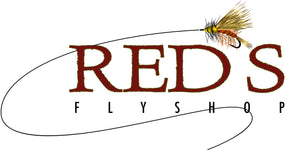Too. Many. OPTIONS. Haha. We can help. Have you looked at taking the plunge into lite spey fishing but are overwhelmed by all the gear? Join the club. LOTS of folks are confused here, so I put together this straightforward, but long video to help you make some educated choices on gear. In addition, here is a framework to help you understand some of the tackle and the basics.
Things to Know:
- Spey fishing is "tight line" fishing best done in currents walking speed or faster.
- 90% of trout spey fishing is done with "Skagit" style lines. These are compact shooting heads designed to be married with sink tips and shooting lines.
- Skagit style casting is "sustained anchor" casting. Slow down and watch this video series when you are ready to start casting.
- Skagit heads MUST have a tip or sink tip attached in order for them to become complete. They are designed with the assumption a tip will be attached.
- A Skagit line is composed of several parts:
- Sink Tip (or floating tip)
- Shooting Head
- Running Line (possibly integrated into the head, possibly connected loop-to-loop). Pro's and con's in video.
- Tippet for Streamers on sink tips should be short and heavy. 3-5' +/- 10-12# test.
Essential Ingredients for a Trout Spey System
- Trout Spey Rod - The most common size range for trout sized critters is an 11' - 11'6" 3-4 weight rod.
- Trout Spey Reel - Should be +/- 7 weight sized. Full frame is beneficial, but not essential.
- Trout Spey Line - Skagit shooting head, can be "integrated" with the running line or the two can be separate.
- Sink Tip (or floating tip) - The sink tip is typically 10-12' and should be proportionally sized to the shooting head. i.e. the same sink tips you use on y our 8 weight spey rod, will be too heavy for the little shooting head on your 3 weight.

